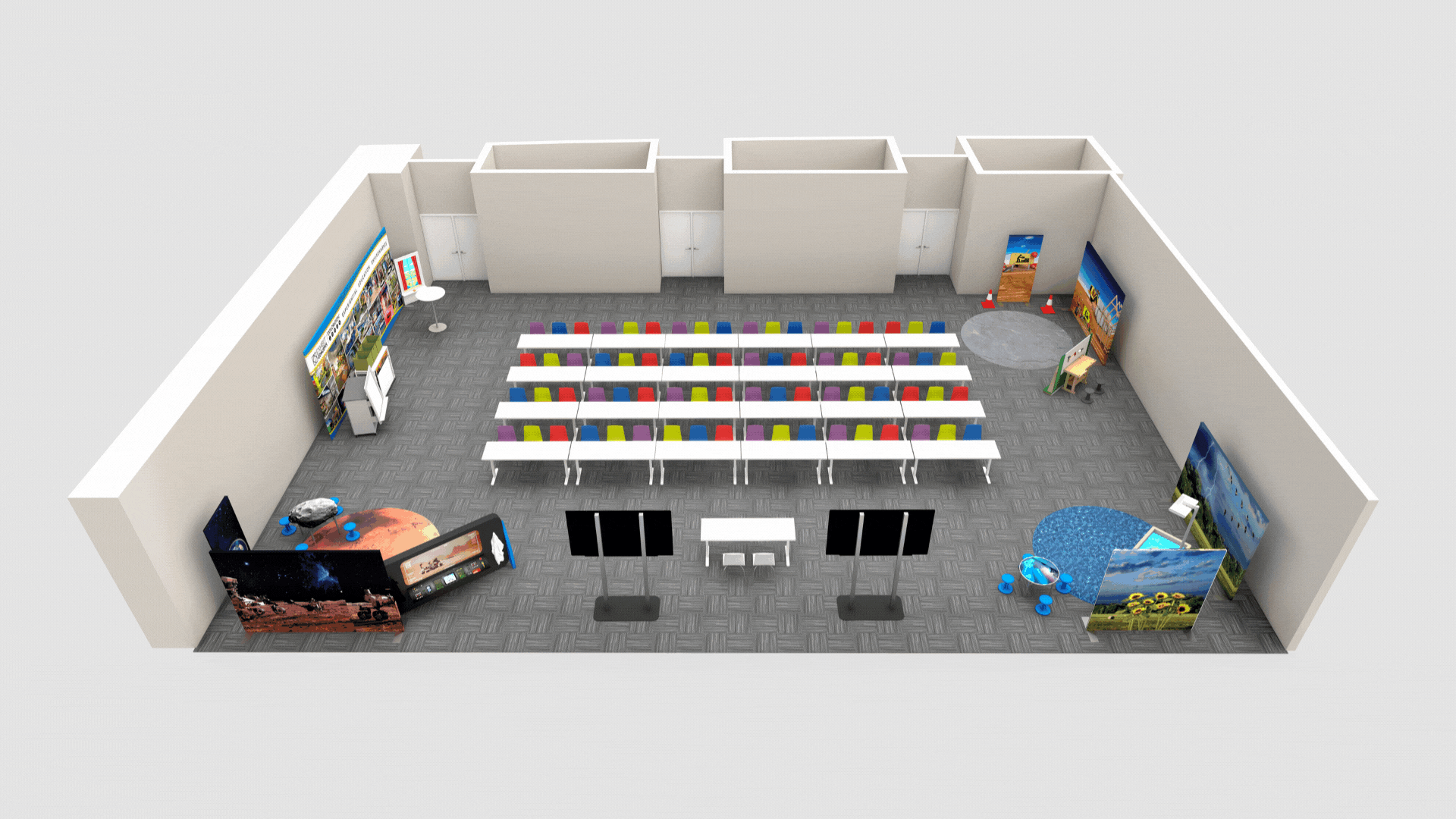Exhibit Concepts
Exploration Zones: Experiential and Flexible Learning
Classroom B 230: Exhibit Concepts
Goal:
This classroom demonstrates how immersive, theme-based environments can transform learning by sparking curiosity and connecting lessons to real-world experiences. Designed with flexibility and customization in mind, the space shows how educators can move fluidly between whole-group instruction, small-group collaboration, and hands-on exploration. Informed by consecutive years of award-winning designs, Exploration Zones by Exhibit Concepts highlights the role of intentional space planning in supporting both students and educators.
Focus:
The focus of this classroom is on experiential learning environments and flexibility. Six unique early learning themes, ranging from community-based learning (Construction and Farm-to-Table) to global navigation (Space and Our World),illustrate how storytelling and design can bring curriculum to life. Classrooms are intentionally planned to foster language, literacy, and math through hands-on exploration, while also aligning with district curriculum goals. For students, these environments encourage agency, creativity, and critical thinking. For administrators and architects, the space provides a chance to experience how design decisions directly impact inclusivity, adaptability, and long-term success.
Impact:
Experiential, hands-on environments not only spark curiosity in young learners but also build the cognitive and interpersonal skills they need well beyond early learning. While this room is outfitted as a Pre-K/K classroom, the same design principles apply across middle school, high school, and CTE spaces, as well as in mobile and destination environments. Experiencing these environments at EDspaces gives decision-makers insight into how flexible, story-driven classrooms can foster deeper engagement, strengthen community support, and provide scalable models that meet evolving educational needs at every stage of learning.
Partners:
-
Exhibit Concepts, Inc.
